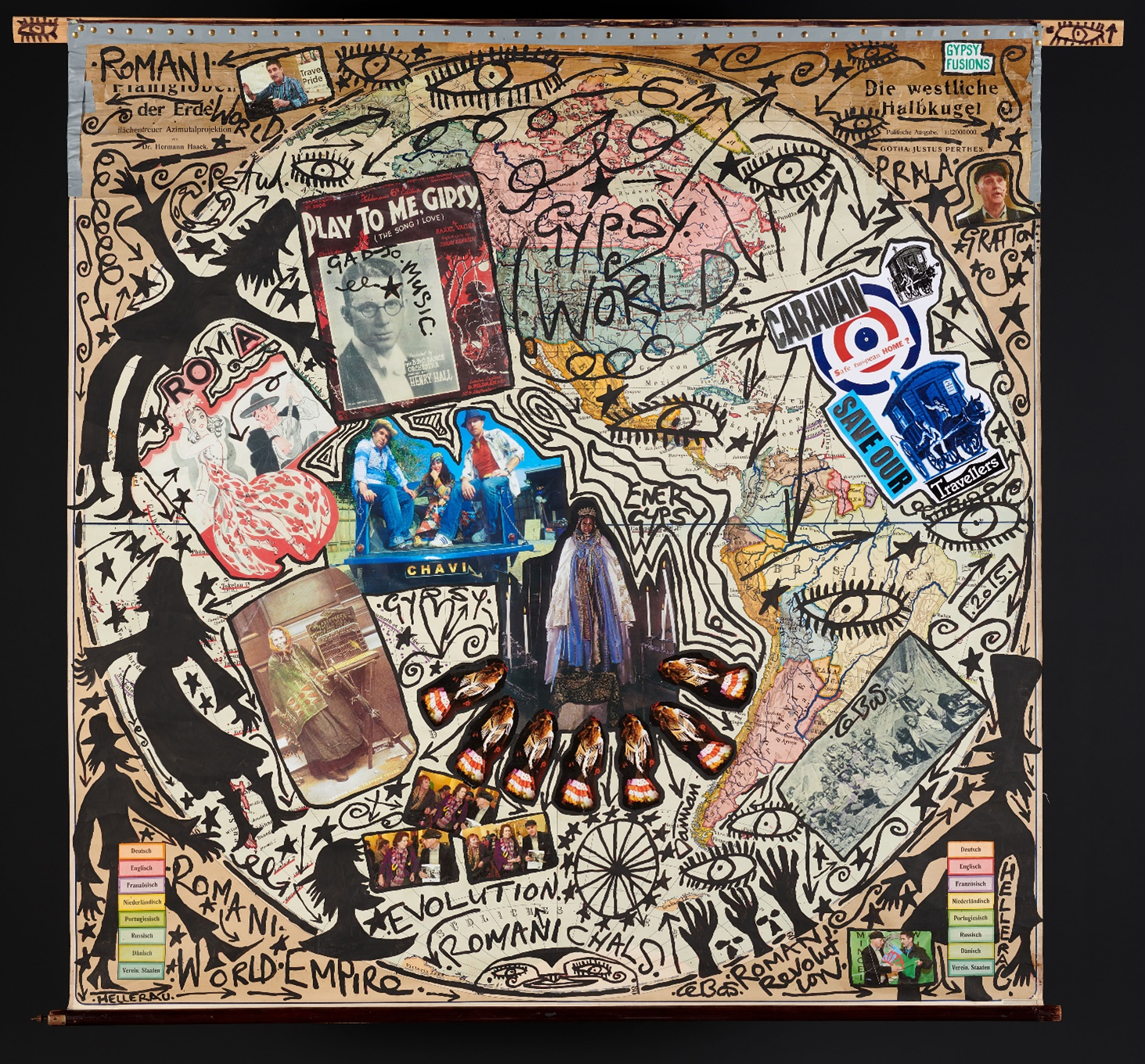For RomaMoMA, it is about making “Roma culture part of the common heritage of mankind,” to paraphrase Malraux. Radically inclusive, RomaMoMA, this brash proposal, is not content twisting the conditions of a museum: it is turning perspectives upside-down. In the case of RomaMoMA, work by artists from Europe’s largest minority, and issues, attitudes and methods pertaining to discourse around it, will be made visible by this uniquely distributed, and at the same time intensely situated, museum.
-Maria Lind: Modest Copernican Revolutions
RomaMoMA—a transnational, collaborative and discursive art project of the European Roma Institute of Arts and Culture (ERIAC) and OFF-Biennale Budapest—is a platform to envision and discuss the potential/imagined forms of a Roma museum of modern and contemporary art that will expand in time and space through a series of exhibitions, art projects and critical discourse.
Before the backdrop of the Covid-19 pandemic, RomaMoMA has developed as digital blog, “RomaMoMA – The Digital Roma Museum”—a forum on which the virtual discussion and the imagining of the museum takes place, in the form of critical essays and videos.
RomaMoMA invites Roma and non-Roma artists, cultural experts, scholars and civil society to imagine an institution which aspires to materialize into a cutting-edge agent of the contemporary arts and culture scene. We aim to create a platform where ideas on the necessity and possible roles of a transnational museum of Roma contemporary art can be exchanged, and to develop a collective proposal for the institution of such a museum.
Encapsulating Roma cultural identity into some kind of uniform description, or instructions on how to recognise a Roma person is extremely complicated. Today, we are involved in a very important joint discourse on who we are and what exactly constitutes Roma cultural identity. As a result of assimilation, we will be able to examine the process of erasing—or to put it more dramatically, the theft of our cultural identity. What comprises the cultural construct of the Roma identity? Answering that question would be like gathering together the pieces of a shattered mirror and trying to put them back together to form the image that appeared in the mirror before it shattered.
-Emília Rigová: A Dialogue (with Oto Hudec)
The RomaMoMA digital blog aims to function as a starting point for a long-lasting, well-established RomaMoMA initiative. A long-term goal is to form an Alliance of Institutions for European Roma Cultural Inclusion, in order to conduct policy change. ERIAC and OFF Biennale invite all public institutions in Europe working within arts and culture—museums, concert halls, academic institutions, cultural decision-makers—to reshape museum protocols and join the Alliance of Institutions for European Roma Cultural Inclusion! Find the RomaMoMA Manifesto for the Alliance of Institutions for European Roma Cultural Inclusion on the RomaMoMA website.
For so long, we have been “the Gypsy Problem,” with so much emphasis put on Roma Inclusion. Why do we not empower and enable ourselves from our position of adversity, which we have always had to overcome, not letting our capabilities be overshadowed and downplayed by the status quo of the dominant society. Creativity out of necessity, out of artistic ability should be celebrated and all of these positions shown. A RomaMoMA needs to express and combine all of the facets of a culture that has been concealed yet capitalised upon by majority society. We are a patchwork of voices, ideas and visualities—like stars, let us shine…
-Delaine Le Bas: RomaMoMA Just Do It! B.A.M.N. – An Idea for a New Museum
The new museum—which calls for concrete, accountable action from dominant cultural institutions in Europe to join in an effort to increase representation of Roma arts and culture—also offers a salient model for reckoning with a racist past and present.
-Meghan Forbes: The Body as Archive, Archiving One’s Self
Follow RomaMoMA, also on Instagram (@eriac_romamoma) to discover all upcoming articles, related events and updates, published every Thursday on the ERIAC website, free and accessible to all!


